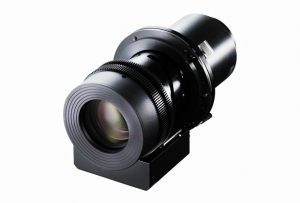Collimating is the process of aligning a light beam or stream of particles in a parallel direction. The process minimizes the spread of the particles, ensuring they propagate in a parallel fashion.
Collimation optics is the process of aligning light beams in a parallel direction. A collimator that is used to narrow light beams in a parallel is called an optical collimator.
An optical collimator is made up of a collimating lens that is attached to a measuring instrument such as a collimator, spectrometer, or light meter. A collimator lens that is used for remote sensing will be attached to the measuring device through a fiber connection.
Here is more on what a collimating lens is and how it works.

A collimating lens is usually made of a curved mirror that is aligned to optimize the collection of light from the light source. This allows the rays of light to be viewed without parallax. The lens prevents the dispersing of light into different directions, allowing the user to configure illumination in a parallel direction.
Collimating lenses are available as single and achromatic beam collimators. Most collimators are made of materials such as lead, tin, tungsten, bismuth, molybdenum, and high-density plastic. The design and manufacturing process of collimating lenses involves molding, polishing, coating, assembling, and testing the lenses.
Optical collimator systems are made up of a tube containing a convex lens on one end and an adjustable aperture on the other end. The convex lens helps minimize the beam divergence of any light that enters the aperture, such that the light beam leaves the collimator as a parallel beam.
Collimating lenses are used in many application requirements, including the following:
Light measurement applications – Collimating lenses help measure light from light sources such as OLED panels. The use of the collimating lens makes it possible to measure the light’s color, flicker, and spectral power distribution.
Display measurement – Collimating lenses enable the measurement of display in terms of flicker, response time, color analysis, gamma, and white point adjustment. The lens allows the alignment of the measurement spot leading to accurate and stable measurement data.
Analysis applications – Collimating lenses are used to transmit and analyze spectral data of translucent materials in the production processes. The ability of the light to enter the sample at a divergent angle enables stable and repeated measurements.

Other applications of collimators include:
Whenever light passes through a reflective object, it’s scattered into different angles. The purpose of an optical collimator is to transform a divergent beam of light into a parallel beam. A collimator also reduces the spatial cross-section of the light beam so that it becomes smaller.
A collimator usually contains a collimator lens or a curved mirror and a light source as its focal point. To minimize the light spread, the focal length of the collimating device and the size of the light source must be balanced.
To achieve ideal collimation, one must minimize the illumination source or increase the focal length of the collimating system. If the collimating system focal length is increased, you must ensure that the system is far away from the light sources. This allows less light to be captured by the focusing system while also decreasing the power of the resultant light beam.
While some collimators work in a fixed alignment, others need to be adjusted to modify the distance between the collimation lens and the light source. The beam-pointing stability is also important, as tiny thermal drifts can cause a big change in the beam direction, especially if the focal length of the collimating lens is small.
Also, depending on the light source, beam collimators may require additional optical elements to minimize light divergence. For instance, if the light sources have strong beam divergence, it may be necessary to use aspheric optics to reduce beam quality deteriorations.
Similarly, if the beam is strongly asymmetrical such that it has a larger divergence in one direction than the other, one can use an anamorphic prism pair to obtain a circular light beam.

In closing, collimation lenses allow light rays to travel in a parallel direction, preventing the light laser beams from dispersing in unwanted directions.
Notable benefits of using collimating lenses are that they allow users to control the field of view. This enables the collection of efficient and spatial-resolution data. Collimating lenses also enable users to configure illumination.
At Shanghai Optics, we manufacture different types of collimating lenses. Our lenses are made of quality materials and have a customized coating which makes them ideal for high-power laser beams. We also offer customized lenses that can meet your specific needs. Additionally, you can also contact us for collimating consulting.
Contact us today, and let us solve all your collimating optical needs.